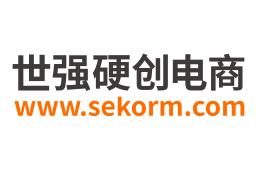Classification of Infrared Sensors




According to the classification, Infrared sensors can be divided into thermal sensors and photon sensors.This article DIANYANG will introduce the thermal sensors and photon sensors.
Thermal sensor
The thermal detector uses the detection element to absorb infrared radiation to produce a temperature rise, and then accompanied by changes in certain physical properties. Measuring the changes in these physical properties can measure the energy or power it absorbs. The specific process is as follows: The first step is to absorb infrared radiation by the thermal detector to cause a temperature rise; the second step is to use some temperature effects of the thermal detector to convert the temperature rise into a change in electricity. There are four types of physical property changes commonly used: thermistor type, thermocouple type, pyroelectric type, and Gaolai pneumatic type.
# Thermistor type
After the heat-sensitive material absorbs infrared radiation, the temperature rises and the resistance value changes. The magnitude of the resistance change is proportional to the absorbed infrared radiation energy. Infrared detectors made by changing the resistance after a substance absorbs infrared radiation are called thermistors. Thermistors are often used to measure thermal radiation. There are two types of thermistors: metal and semiconductor.
R(T)=AT−CeD/T
R(T): resistance value; T: temperature; A, C, D: constants that vary with the material.
The metal thermistor has a positive temperature coefficient of resistance, and its absolute value is smaller than that of a semiconductor. The relationship between resistance and temperature is basically linear, and it has strong high temperature resistance. It is mostly used for temperature simulation measurement;
Semiconductor thermistors are just the opposite, used for radiation detection, such as alarms, fire protection systems, and thermal radiator search and tracking.
# Thermocouple type
Thermocouple, also called thermocouple, is the earliest thermoelectric detection device, and its working principle is pyroelectric effect. A junction composed of two different conductor materials can generate electromotive force at the junction. The end of the thermocouple receiving radiation is called the hot end, and the other end is called the cold end. The so-called thermoelectric effect, that is, if these two different conductor materials are connected into a loop, when the temperature at the two joints is different, current will be generated in the loop.
In order to improve the absorption coefficient, black gold foil is installed on the hot end to form the material of the thermocouple, which can be metal or semiconductor. The structure can be either a line or a strip-shaped entity, or a thin film made by vacuum deposition technology or photolithography technology. Entity type thermocouples are mostly used for temperature measurement, and thin-film type thermocouples (consisting of many thermocouples in series) are mostly used to measure radiation.
The time constant of the thermocouple type infrared detector is relatively large, so the response time is relatively long, and the dynamic characteristics are relatively poor. The frequency of the radiation change on the north side should generally be below 10HZ. In practical applications, several thermocouples are often connected in series to form a thermopile to detect the intensity of infrared radiation.
# Pyroelectric type
Pyroelectric infrared detectors are made of pyroelectric crystals or “ferroelectrics” with polarization. Pyroelectric crystal is a kind of piezoelectric crystal, which has a non-centrosymmetric structure. In the natural state, the positive and negative charge centers do not coincide in certain directions, and a certain amount of polarized charges are formed on the crystal surface, which is called spontaneous polarization. When the crystal temperature changes, it can cause the center of the positive and negative charges of the crystal to shift, so the polarization charge on the surface changes accordingly. Usually its surface captures floating charges in the atmosphere and maintains an electrical equilibrium state. When the surface of the ferroelectric is in electrical equilibrium, when infrared rays are irradiated on its surface, the temperature of the ferroelectric (sheet) rises rapidly, the polarization intensity drops quickly, and the bound charge decreases sharply; while the floating charge on the surface changes slowly. There is no change in the internal ferroelectric body.
In a very short time from the change in the polarization intensity caused by the temperature change to the electrical equilibrium state on the surface again, excess floating charges appear on the surface of the ferroelectric, which is equivalent to releasing a part of the charge. This phenomenon is called the pyroelectric effect. Since it takes a long time for the free charge to neutralize the bound charge on the surface, it takes more than a few seconds, and the relaxation time of the spontaneous polarization of the crystal is very short, about 10-12 seconds, so the pyroelectric crystal can respond to rapid temperature changes.
# Gaolai pneumatic type
When the gas absorbs infrared radiation under the condition of maintaining a certain volume, the temperature will increase and the pressure will increase. The magnitude of the pressure increase is proportional to the absorbed infrared radiation power, so the absorbed infrared radiation power can be measured. Infrared detectors made by the above principles are called gas detectors, and the Gao Lai tube is a typical gas detector.
Photon sensor
Photon infrared detectors use certain semiconductor materials to produce photoelectric effects under the irradiation of infrared radiation to change the electrical properties of the materials. By measuring the changes in electrical properties, the intensity of infrared radiation can be determined. The infrared detectors made by the photoelectric effect are collectively called photon detectors. The main features are high sensitivity, fast response speed and high response frequency. But it generally needs to work at low temperatures, and the detection band is relatively narrow.
According to the working principle of the photon detector, it can be generally divided into an external photodetector and an internal photodetector. Internal photodetectors are divided into photoconductive detectors, photovoltaic detectors and photomagnetoelectric detectors.
# External photodetector (PE device)
When light is incident on the surface of certain metals, metal oxides or semiconductors, if the photon energy is large enough, the surface can emit electrons. This phenomenon is collectively referred to as photoelectron emission, which belongs to the external photoelectric effect. Phototubes and photomultiplier tubes belong to this type of photon detector. The response speed is fast, and at the same time, the photomultiplier tube product has a very high gain, which can be used for single photon measurement, but the wavelength range is relatively narrow, and the longest is only 1700nm.
# Photoconductive detector
When a semiconductor absorbs incident photons, some electrons and holes in the semiconductor change from a non-conductive state to a free state that can conduct electricity, thereby increasing the conductivity of the semiconductor. This phenomenon is called the photoconductivity effect. Infrared detectors made by the photoconductive effect of semiconductors are called photoconductive detectors. At present, it is the most widely used type of photon detector.
# Photovoltaic detector (PU device)
When infrared radiation is irradiated on the PN junction of certain semiconductor material structures, under the action of the electric field in the PN junction, the free electrons in the P area move to the N area, and the holes in the N area move to the P area. If the PN junction is open, an additional electric potential is generated at both ends of the PN junction called the photo electromotive force. Detectors made by using the photo electromotive force effect are called photovoltaic detectors or junction infrared detectors.
# Optical magnetoelectric detector
A magnetic field is applied laterally to the sample. When the semiconductor surface absorbs photons, the electrons and holes generated are diffused into the body. During the diffusion process, the electrons and holes are offset to both ends of the sample due to the effect of the lateral magnetic field. There is a potential difference between both ends. This phenomenon is called the opto-magnetoelectric effect. Detectors made of photo-magnetoelectric effect are called photo-magneto-electric detectors (referred to as PEM devices).
- |
- +1 赞 0
- 收藏
- 评论 0
本文由咪猫转载自DIANYANG,原文标题为:Infrared sensor basics,本站所有转载文章系出于传递更多信息之目的,且明确注明来源,不希望被转载的媒体或个人可与我们联系,我们将立即进行删除处理。
相关推荐
【经验】简析红外热像仪和夜视仪的区别
红外热像科技在军民两方面都有应用,最开始起源于军用,逐渐转为民用。在民用中一般叫红外热像仪,主要用于研发或工业检测与设备维护中,在防火、夜视以及安防中也有广泛应用。本文点扬科技为您介绍红外热像仪和夜视仪的区别。
Application Advantages Of Infrared Thermal Imaging Technology In The Field Of Machine Vision
In summary, infrared thermal imaging + machine vision solutions are developing rapidly, with outstanding performance and cost advantages, and with the development of industrialization, their functions are constantly improving and expanding. The application of modular general-purpose equipment can effectively improve the work efficiency of developers and shorten the development cycle.
【经验】详解热像仪的使用小技巧
本文由点扬科技分享testo热像仪使用小技巧。许多用户都期望能将温度反常点或许要害点定位,由于没有明显的分辩能力,就需求使用IRSoft软件中的Twinpix热迭加功能,将可见光相片和红外热成像相片精准叠加,然后能定位到温度反常点或要害点。
红外热成像系统产品及定制服务供应商点扬科技授权世强先进代理红外热像仪、热分析仪产品
2021年12月1日,深圳点扬科技有限公司(以下简称“点扬科技”)与世强先进(深圳)科技股份有限公司(下称“世强先进”)签署代理协议,授权世强先进代理其旗下红外热像仪、热分析仪等产品。 点扬科技是一家专门致力于红外热成像系统定制服务的技术型企业,为广大企业客户提供专业的基于红外热成像产品,以及各种操作简单、功能全面、技术专业的各种解决方案,其产品广泛应用于工业、制造业与消费电子等领域。
XL-2012IRC-940 0805 红外 940nm 贴片式发光二极管技术数据表( XL-2012IRC-940 0805 红外 940nm 贴片式发光二极管 Technical Data Sheet)
本资料为XL-2012IRC-940红外940nm贴片式发光二极管的技术数据手册。资料详细介绍了该产品的外观尺寸、颜色及胶体、环保工艺、湿气敏感性等级、包装方式、适用性以及电气特性、光学特性、极限参数、可靠性测试项目等。
成兴光 - XL-2012IRC-940,红外发光微型光障,红外传感器,光电开关,PHOTOELECTRIC SWITCH,INFRARED SENSOR,红外发光微光障,烟雾探测器,智能产品家电虹膜识别,INFRARED LUMINESCENT MICRO LIGHT BARRIER,软盘驱动器,SMOKE DETECTOR,INDUCTION SWITCH,FLOPPY DISK DRIVER,感应开关,INTELLIGENT PRODUCT HOUSEHOLD APPLIANCE IRIS RECOGNITION,红外线传感器
【技术】点扬科技介绍挑选红外热成像仪的重点
点扬科技介绍挑选热像仪的重点,重要的是心脏—红外热成像仪的核“芯”。电脑的心脏是CPU,热像仪的心脏是红外探测器。探测器分为制冷和非制冷,非制冷体积小功耗低,目前民用市场干流选用的都对错制冷红外焦平面探测器,而作为感知红外辐射与输出信号间的桥梁。
【技术】分析红外热成像仪的测量距离
点扬科技红外热像仪的丈量间隔,当丈量方针温度时,请务必了解能够拿到精确测温读数的大丈量间隔。对于非制冷微热量型焦平面探测器,要想精确地分辨方针,通过FLIR红外热像仪光学体系的方针图像需求占到9个像素,或许更多。
XL-3216IRC-940 1206 红外 940nm 发射二极管技术数据表( XL-3216IRC-940 1206 红外 940nm 发射二极管 Technical Data Sheet)
本资料为XL-3216IRC-940红外发射二极管的技术数据手册,详细介绍了该产品的尺寸、特性、电气参数、应用领域、可靠性测试、封装、焊接指南、注意事项等。
成兴光 - 红外 940NM 发射二极管,XL-3216IRC-940,红外发光微型光障,红外传感器,光电开关,PHOTOELECTRIC SWITCH,INFRARED SENSOR,红外发光微光障,烟雾探测器,智能产品家电虹膜识别,INFRARED LUMINESCENT MICRO LIGHT BARRIER,软盘驱动器,SMOKE DETECTOR,INDUCTION SWITCH,FLOPPY DISK DRIVER,感应开关,INTELLIGENT PRODUCT HOUSEHOLD APPLIANCE IRIS RECOGNITION,红外线传感器
【技术】红外热像仪的使用介绍
本文点扬科技将介绍红外热像仪的使用。红外热像科技在军民两方面都有使用,开端起源于军用,逐渐转为民用。在民用中一般叫热像仪,首要用于研制或工业检测与设备维护中,在防火、夜视以及安防中也有广泛使用。通俗地讲热像仪便是将物体发出的不可见红外能量转变为可见的热图画。
红外热成像系统定制服务供应商——点扬科技(DIANYANG)
点扬科技(DIANYANG)是一家专门致力于红外热成像系统定制服务的技术型企业,也是一家研发、设计、生产、热像仪技术的企业,通过视频和温度分析进行测量和诊断的检测系统,主营业务包括产品定制开发服务及红外热成像产品家族,能够为客户提供机器视觉、个人视觉、无人机红外及机芯模组等产品和解决方案。
XL-3216PDC 1206 光敏接收管贴片式发光二极管技术数据表( XL-3216PDC 1206 光敏接收管贴片式发光二极管 Technical Data Sheet)
XL-3216PDC是一款1206尺寸的光敏接收管贴片式发光二极管,具有黑色胶体封装,符合ROHS要求。产品适用于SMT贴片自动化生产和红外线回流焊制程,广泛应用于智能产品家电虹膜识别、红外发光微型光障、软盘驱动器、光电开关、烟雾探测器和红外传感器等领域。
成兴光 - 光敏接收管贴片式发光二极管,XL-3216PDC,红外发光微型光障,红外传感器,光电开关,PHOTOELECTRIC SWITCH,INFRARED SENSOR,红外发光微光障,烟雾探测器,智能产品家电虹膜识别,INFRARED LUMINESCENT MICRO LIGHT BARRIER,软盘驱动器,SMOKE DETECTOR,INDUCTION SWITCH,FLOPPY DISK DRIVER,感应开关,INTELLIGENT PRODUCT HOUSEHOLD APPLIANCE IRIS RECOGNITION,红外线传感器
【产品】体积小巧、重量轻、接口丰富的无人机载红外热成像仪,支持电动调焦
SM-19无人机载专用红外热成像仪,选用进口探测器,工作稳定、性能卓越,配合独有的测温校正算法和易用的用户界面,体积小巧、重量轻、接口丰富的特点,适合无人机机载。
【应用】采用可见光和红外热成像相结合的双光谱人员温度检测红外热成像仪DR-23,适用于小型人流量场所
点扬科技推出DR-23双光谱人员温度检测红外热成像仪。热成像测温是通过非接触方式检测人体温度,可以简捷、安全、直观、准确的查找、判断人员是否存在体温异常现象,迅速采取措施解决防止发热人员流动。
XL-TD3216HIRC-850 1206 球头红外发射 850nm 技术数据表( XL-TD3216HIRC-850 1206 球头红外发射 850nm Technical Data Sheet)
XL-TD3216HIRC-850是一款850nm红外发射器,具有小型化设计,适用于SMT贴片自动化生产和红外线回流焊制程。产品符合ROHS要求,具有环保工艺,适用于智能产品家电虹膜识别、红外发光微型光障、软盘驱动器、光电开关、烟雾探测器、红外传感器和感应开关等领域。
成兴光 - XL-TD3216HIRC-850,红外发光微型光障,红外传感器,光电开关,PHOTOELECTRIC SWITCH,INFRARED SENSOR,红外发光微光障,烟雾探测器,智能产品家电虹膜识别,INFRARED LUMINESCENT MICRO LIGHT BARRIER,软盘驱动器,SMOKE DETECTOR,INDUCTION SWITCH,FLOPPY DISK DRIVER,感应开关,INTELLIGENT PRODUCT HOUSEHOLD APPLIANCE IRIS RECOGNITION,红外线传感器
65 Unique Uses of Infrared Thermal Imaging Cameras
The article DIANYANG presents 65 market applications for thermal imaging cameras, including thermal imaging cameras for mechanical inspection and preventive maintenance and so on.
电子商城
品牌:MELEXIS
品类:Infra Red thermopile sensor
价格:¥131.8648
现货: 0




































































































































































































登录 | 立即注册
提交评论